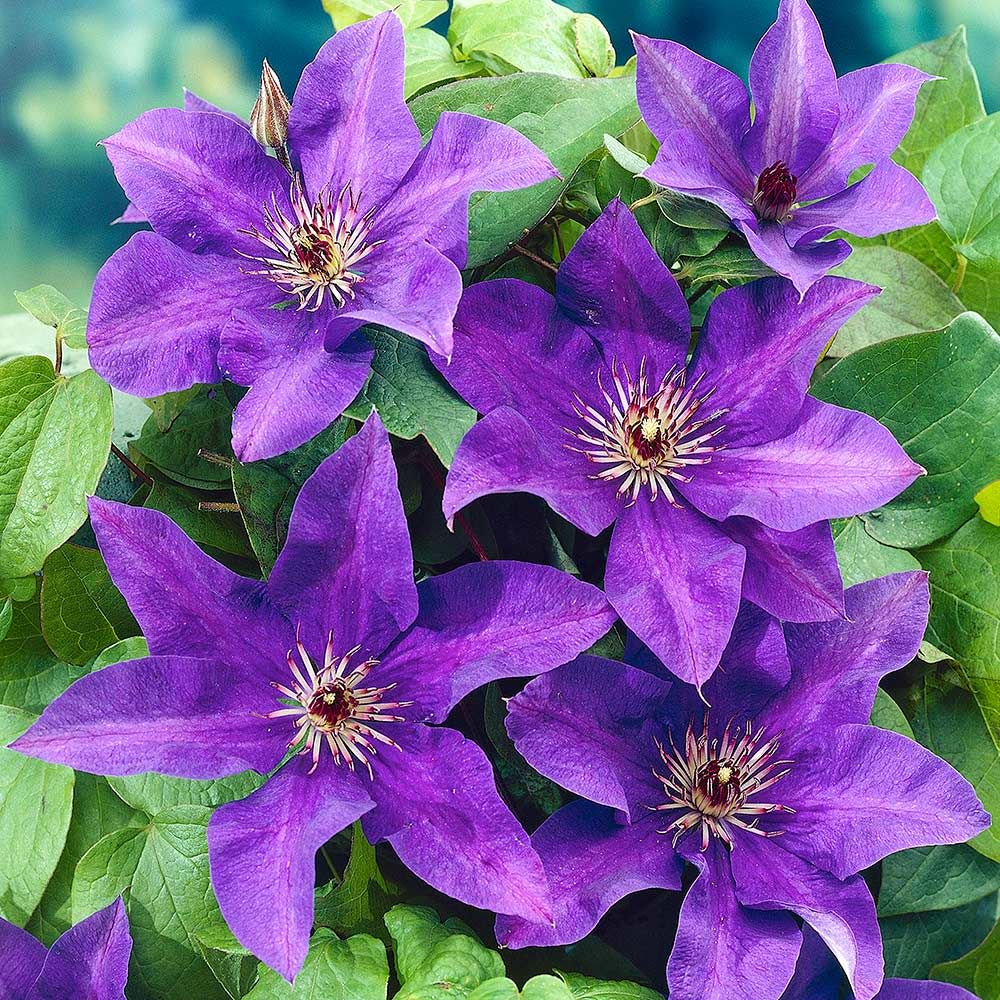
Nellie Moser
What does it mean to believe, sometimes against all odds, that the near impossible is possible, not to ever give up, but to try and try again? For me it’s the cultivation of the large flowering Jackmanii clematis.
I am a hopelessly romantic optimist when it comes to these clematis’ varieties. Every spring I am beside myself with the new season’s selection. I shake with excitement and practically weep with happiness. They are irresistible. The breath quickens, the blood rushes, the endorphins spin. A sense of merry madness, even silly insanity grips me. The opportunities for landscaping are endless. The window of their annual availability is brief and finite. So now, today, it’s now or never.
The imagination soars, I just cannot deny myself. Yes, I must have that one, and that one, but what about the others? The choice is tantalisingly overwhelming. Ok, three is enough, but really 5 would be better, maybe even 7. But what about that final other one over there, near the end, the one that screams do not forget me, its label, like all the others, promising so much. I quickly decide that life’s far too short and the season of their availability is so minimal in time, that I dearly deserve every single one of my choices. The nursery trolley quickly fills to overload, its wheels stubbornly stuck stationary with the clematis’ combined weight. I labour to the counter. The wallet opens wide, the cash disappears, and then the card is maxed. And I’m as happy as a pig in mud.
Then reality hits me. In years gone by, my wee humble garden was just one large clematis cemetery. It was littered with their old, faded, slug bitten, battered labels, which acted as tombstones, evidence of past failures and hard forgotten dreams.
But not this time, not this spring, not this year. This time I am not headed for the hell of heartache. I am determined that history will not repeat itself. As Confucius states, “always look backward to gaze into the future.” Valuable lessons have been learnt through hard and harsh experience, and the sorry demise of my many previous clematis plantings just ain’t gonna happen no more. This year instead of a clematis cemetery I am determined to create a clematis Garden of Eden.

Josephine
Varieties
Whoever said, ‘size doesn’t count’, well, they have never grown the large flowered Jackmanii clematis varieties. It does, big time, the bigger the flower the better. These hybrids possess majestic flowers of sizes between 15cm -20cm. Today there are so many beautiful varieties to choose and salivate over. I highly recommend both the pure white ‘Marie Boisselot’ 15-20cm in flower size and ‘Madame Le Coultre’ 15–20cm, the rich magenta ‘Ernest Markham’ 15-18cm, ‘Candy Stripe’, striped pink with mauve 15-18cm, the rich violet blue of the ‘President’ 15-20cm, creamy green with pink mauve ‘Josephine’ 15cm, the large pale violet blue ‘Crystal Fountains’ 12-15cm, and the pink lilac with carmine stripes Nellie Moser’ 15-20cm. The list is practically infinite. I recommend to readers to do their own research to find and discover the magical world of clematis.
Cultivation
It’s in the clematis’ first year when you must throw endless love and attention at them. Soil preparation is everything. In a large bucket mix together a third of a bag of great quality compost with about 3 generous handfuls of Seamungus, one of Rooster Booster and about six taken from the existing soil you have dug out when creating the planting soil. Plant the clematis and add another couple of handfuls of Seamungus on top, then lastly a layer of sugar cane mulch. Then there is the mantra of never, ever, ever, ever, let the new root ball dry out, especially in the long, hot dog days of summer. You must with great devotion, drench them with very regular, long, deep, and even deeper drinks of water. Mandatory is that rocks and/or mulch are placed at their feet, in order to provide them with a cool root run. I repeat mandatory. And beware and be on high alert, please watch out for the dastardly onslaught of the early spring scourge of slugs and snails, which can devour and destroy a clematis overnight.

The President
Landscaping
Landscaping with clematis can only be matched by the limits of your imagination. So give your clematis the opportunity to let fly and soar. I throw them in at the feet of climbing and long hedges of roses, the red leaved tall trunks of Cordylines, the deciduous shrubs such as Japanese maples, Philadelphus, Deutzia, Kolwitzia and Berberis, and hedges of every kind. Basically it’s any plant which can provide a framework for them to grow up and through.
One trick I have had success with and repeat quite often, is to combine a couple of the large flowered varieties with the smaller flowered Montana clematis, all together in a large common hole. Importantly, the more robust and tougher ‘Montana’ will provide the skeletal support for the larger flowered varieties to snake, twine and twist upwards. In addition the larger flowered varieties will begin to flower in the last weeks of the Montana’s. Thus there is a brief, yet glorious couple of weeks or more when the two combine to flower so fabulously together.
So, I am no longer clothed in a cloak of mourning for all my previous perished and past clematis plants. There will be no more future funerals accompanied by my endless woes and weeping tears. My graveyard of lazy good intentions is over. It does pay to believe and dream big. The impossible is possible.
My next dream to achieve is to have clematis strutting their flowering stuff every calendar month of the year. But that’s for another blog.
The subject of further blogs to come are the
‘Viticella’ clematis,
Winter flowering ‘Nepalensis,’
‘Best way to prune all the different varieties of clematis.’Happy gardening and have fun,
Ned McDowell